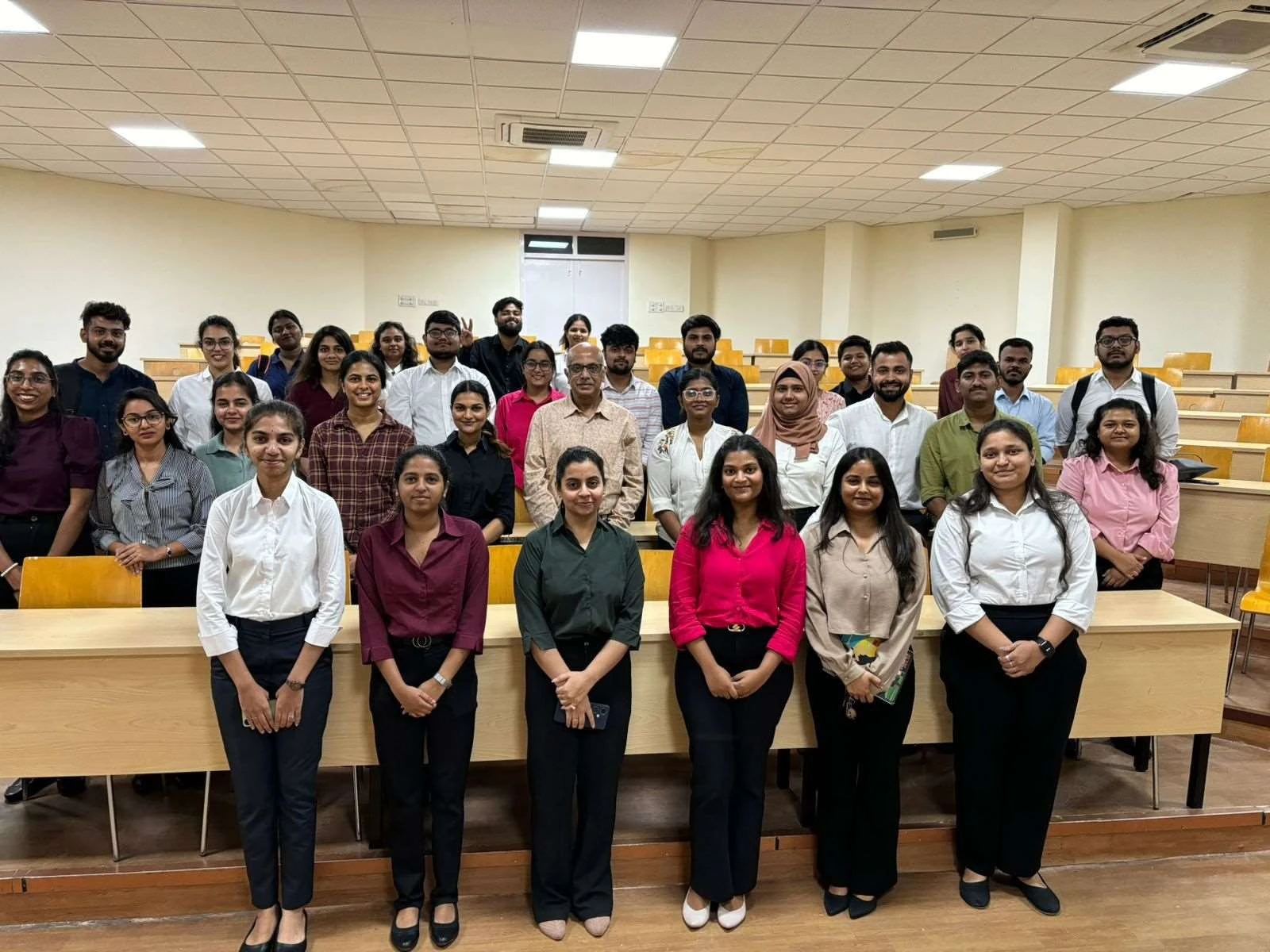
Guest Lecture by Dr. Arijit Sikdar
Summary
Event Name: Guest Lecture by Dr. Arijit Sikdar
Objective: To deepen students' understanding of strategic concepts for strengthening a company's competitive position and managing international business challenges. It emphasized the practical application of key frameworks and strategies. This provided students with actionable insights for real-world scenarios.
Outcome: An insightful session as the students were able to relate and apply the strategic concepts learned in class to real-world scenarios. The lecture deepened their understanding of value creation, competition management, and international business strategies, equipping them with practical tools for their future careers.
Report
In the insightful guest lecture, Dr. Arijit Sikdar addressed a wide variety of strategic ideas that are essential for enhancing an organization's competitive position and comprehending global business dynamics. He started out by stressing the need of adding value by utilizing a firm's resource position in addition to developing a strong value proposition. The importance of the value chain, resource allocation, and the various forms of market competition—from monopolies to pure competition—were all covered in the competitive positioning debate.

Additionally, Dr. Sikdar presented the Blue Ocean Strategy and provided examples of how it has been used by businesses to carve off uncontested market space, such as Nintendo and Cirque du Soleil. He emphasized the Lock-in Strategy, which centers on enhancing a company's image to promote brand loyalty and generate substantial switching costs for clients.
These expenses might be direct, relationship-, product-, or customer-related, which frequently makes it more advantageous for current clients to remain with you rather than go elsewhere.
The lecture also covered the typology of cooperative partnerships, vertical integration, and the strategic significance of mergers and acquisitions. A method for comprehending the growth and allocation of resources inside a company was introduced: The Resource pathway framework. Dr. Sikdar introduced the Value Creation Framework for Multinational Enterprises (MNEs), which centers on internal competencies and value creation in an international setting, in the context of international business and strategy. He made a distinction between firm-specific advantages (FSAs) that are transferable and those that are not.
On the second day, Dr. Sikdar delved into the CAGE Framework by Ghemawat, which analyzes the impact of cultural, administrative, geographic, and economic distances on international business operations. He talked about how these elements impact different businesses and the tactical measures MNEs might take to lessen these difficulties.
The complexity of competing in developing markets—which are distinguished by their expanding consumer expenditure and market size—was also covered in the interaction. Dr. Sikdar outlined the importance of emerging economies for multinational enterprises (MNEs), the institutional and intermediary gaps they provide, and effective tactics for doing business in these countries. He talked on partner and product policies and stressed the need to modify business models, especially when aiming at the bottom of the pyramid.
Finally, Dr. Sikdar spoke on business strategy, emphasizing diversity, its motivations, and how it affects output. He outlined the rationale for synergy and distinguished between actions that provide value—like mentoring and resource provision—and those that detract from it—like raising management expenses and bureaucratic red tape. With insights on portfolio management, the workshop ended with a thorough grasp of business strategy in a global setting.
